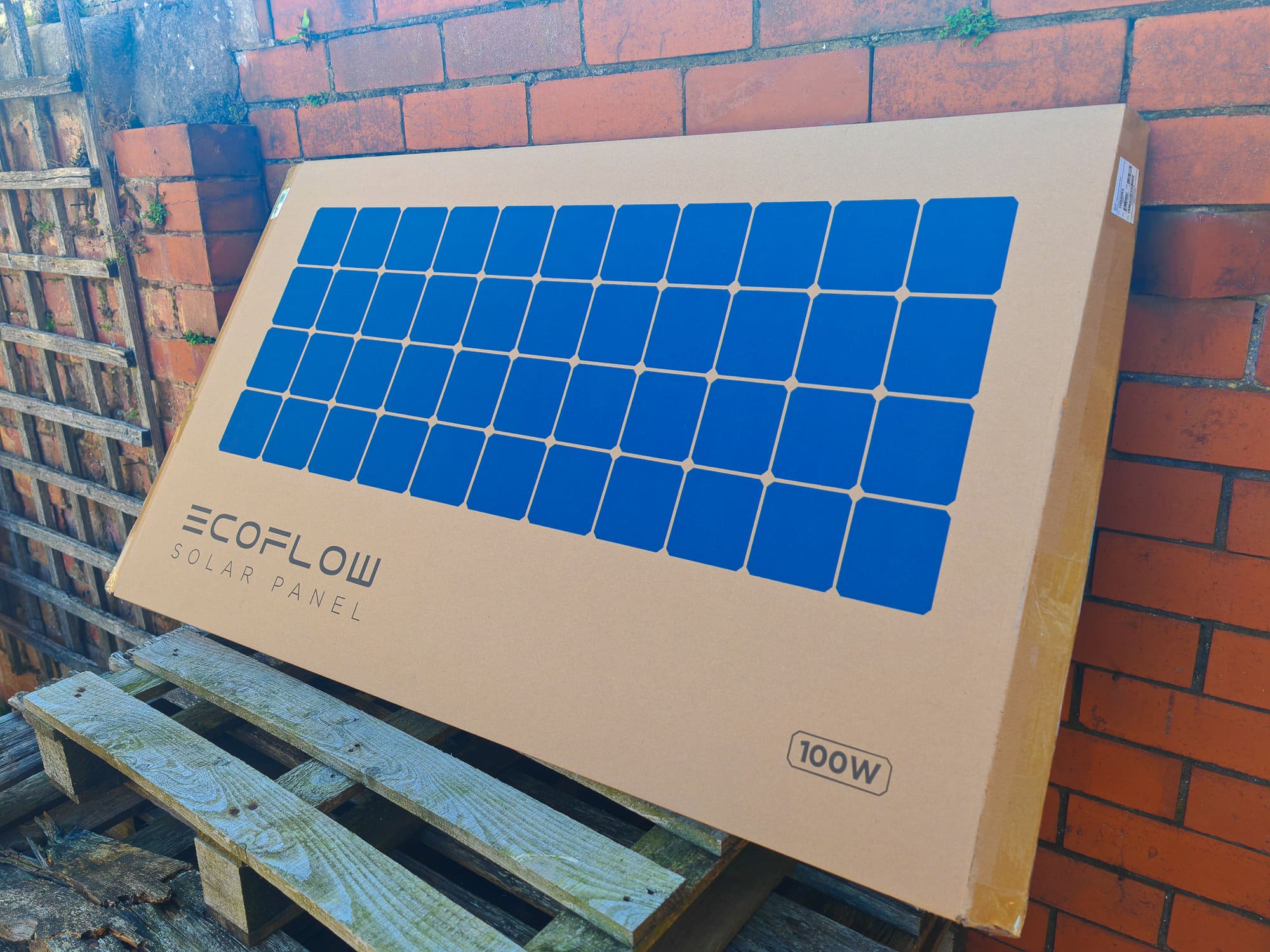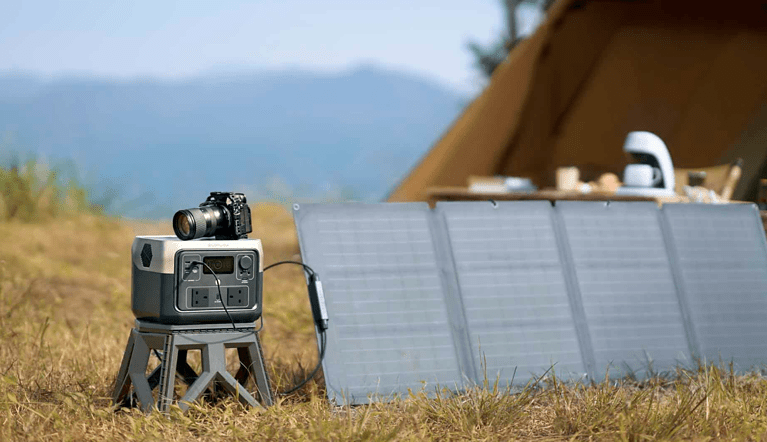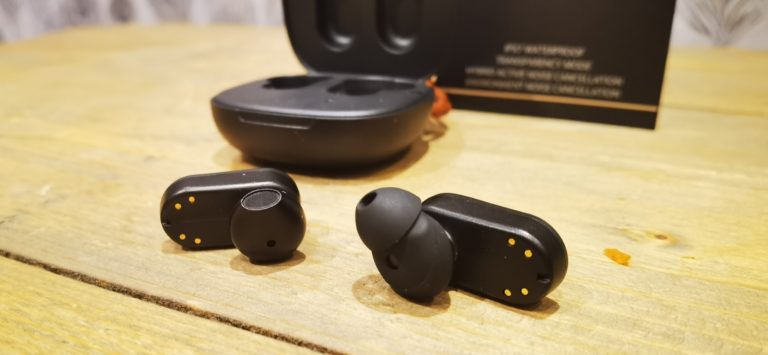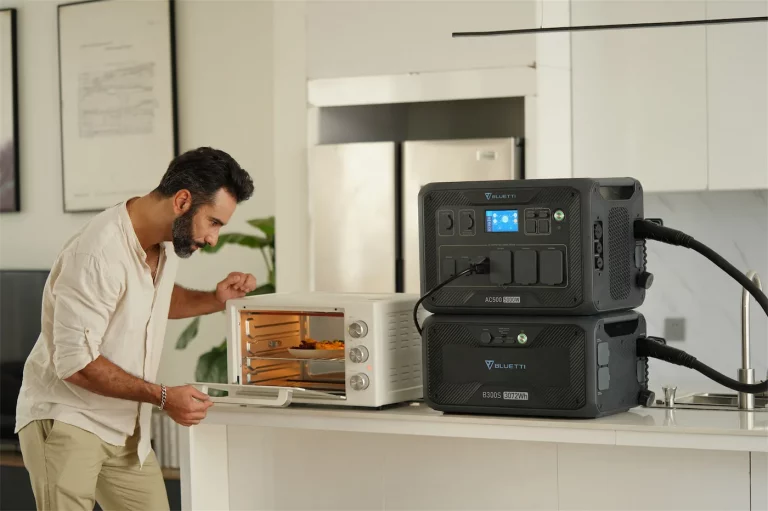Any links to online stores should be assumed to be affiliates. The company or PR agency provides all or most review samples. They have no control over my content, and I provide my honest opinion.
I have previously received the massive EcoFlow 400W solar panel and the superb 220W bifacial solar panel.
I am particularly fond of the bifacial panel as it is less cumbersome to set up, and the bifacial design allows it to capture 220W on the primary side and 155W rear side, theoretically. This means you are much more likely to hit the peak output than single-sided ones. In fact, I quite easily achieved a 220W input on the EcoFlow RIVER 2 MAX.
EcoFlow has now sent me something a little different, the 100W flexible solar panel. This is designed to be fixed in place and is specifically targeted at vehicles, allowing you to mount it flat against the curvature of the roof of a vehicle and minimise the additional weight.
| Preview | Product | Rating | Price | |
|---|---|---|---|---|

| EcoFlow 100W Flexible Solar Panel with IP68 Waterproofing &... | £109.00 | Buy on Amazon |
Specification
- Weighs only 2.3 kg / 5.1lbs, making it extremely lightweight
- 258° flexibility, making it easy to fit to any surface
- An IP68 waterproof rating for added durability
- Universally compatible
- 182 monocrystalline silicon cells with glass fibre and lamination process
- Efficiency rating of 23%
- Pre-cut eyelets for hanging or secure directly to the surface with adhesive
- 3.3ft solar cable that
- Short Circuit Current – 6.3A
- Maximum Operating Current – 5.9 A
- Maximum Fuse Current – 15 A
- Maximum System Voltage – 600 VDC (UL)
- Open Circuit Voltage – 20.3V
- Maximum Operating Voltage – 17.1 V
- Dimensions – 1055*612*25 mm
Design
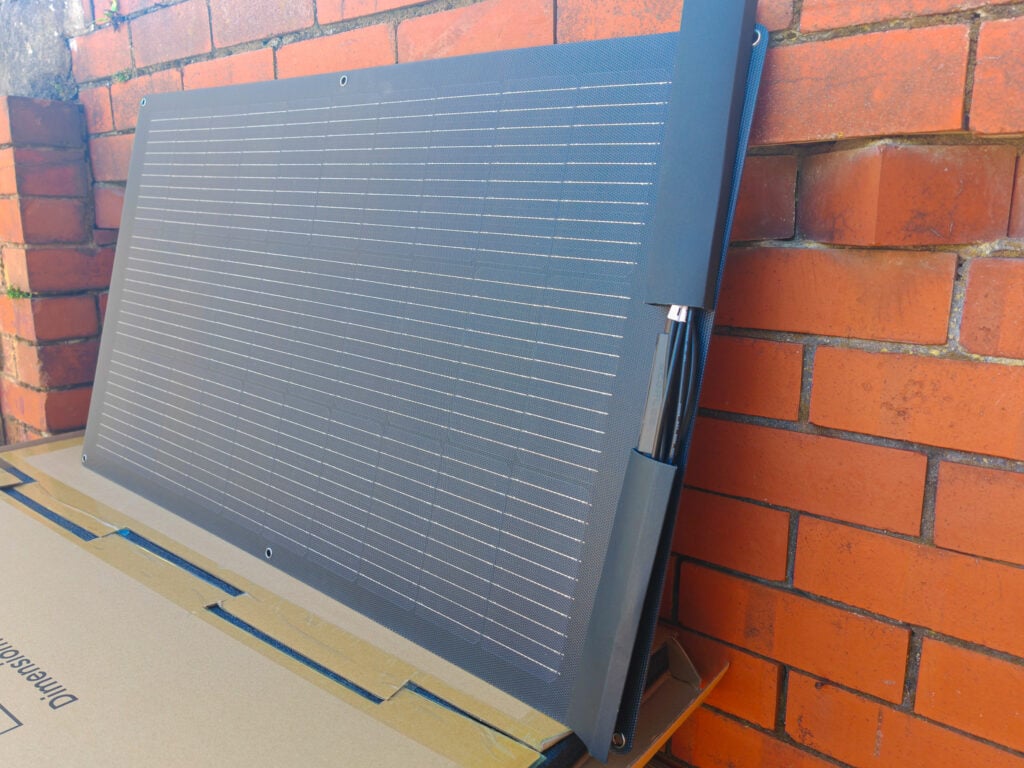

There is not a lot to say about the design, and I don’t have a great deal of experience with flexible solar panels.
Apart from it being a big black flexible solar panel, my initial subjective impression was that it seems much larger than expected when comparing it to the EcoFlow 400W Portable Solar Panel.
Checking the dimensions, it works out about right. The portable panel is 1058mm tall and 25mm deep, and then 2365 wide.
A single flexible panel is a little shorter at 1055mm, the same 25mm depth, then 612mm wide. So four panels would be 2448mm wide, so just a bit wider than the all-in-one portable panel. This explains why the 400W panel is so unwieldy.
These panels then have six eyelets with a metal ring for easy mounting using cable ties, and each panel has the usual MC4 solar connectors.
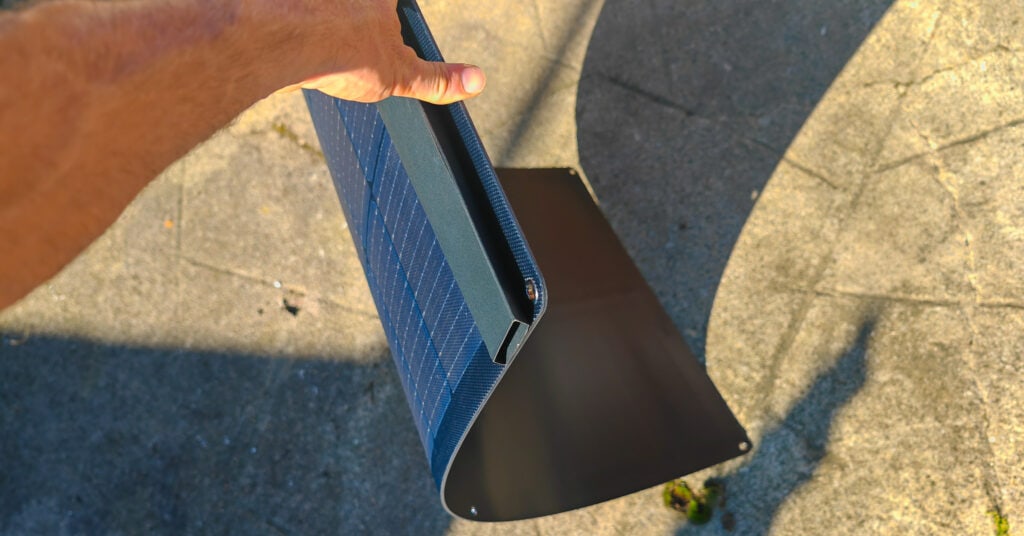

I didn’t want to test their flexibility too much, but as you’d expect, there is plenty of flex with these allowing you to shape them over curved surfaces if you plan to glue them down.
The panels have the same durable coating you get on EcoFlow portable solar panels, they state this I an advanced glass fibre and lamination process, protecting the panel and enhancing performance.
Installation
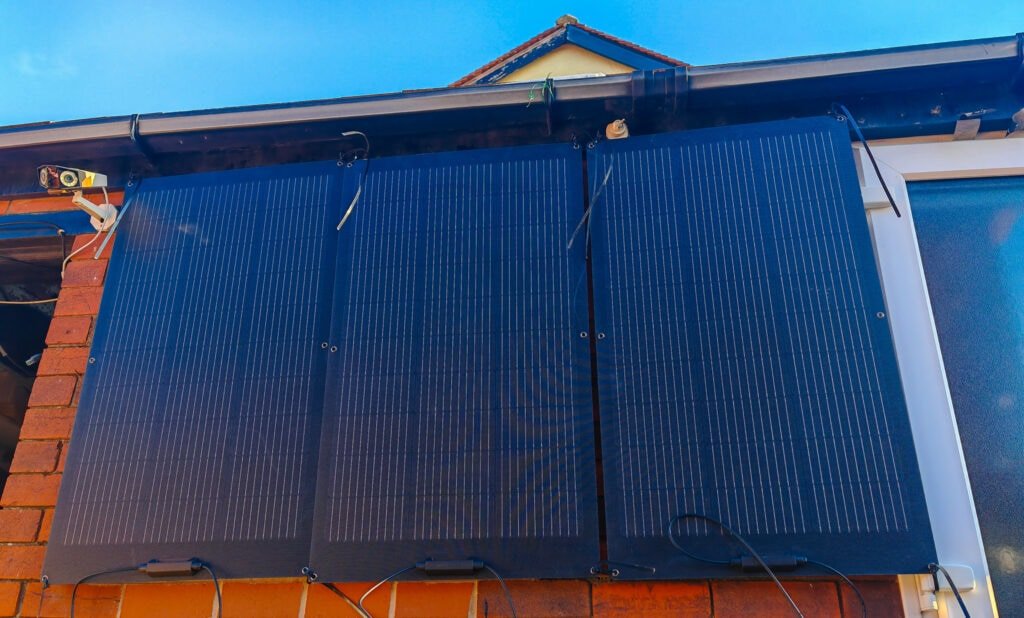

My installation is sub-optimal, to say the least. Flexible solar panels are really designed for things like RVs, campervans and boats, where you would glue down the panel, with the flexible nature allowing the panel to bend to the shape of the roof of the vehicle.
I no longer have access to a canal boat, so that option was off the table. I also live in a relatively rough seaside town with not much of a back garden and a house that is positioned poorly for sun exposure. I don’t want to leave my set up exposed in our front garden where there is more sun exposure, as it would likely get nicked.
I initially wanted to mount the panels on my garage roof with the plan to run my gym and networking products semi-off-grid, but I’d have to mount the panels on some sort of frame and then mount that to the roof with the various roof mount kits.
At some point, I will do this, but for my initial review, I mounted the panels down the wall using outdoor screw hooks and using the included cable ties through the eyelets. For someone so incompetent, I am quite proud of the result, and it is sort of like mounted as EcoFlow show in their balcony solar setups. Hopefully, the northern gusts of wind won’t rip anything off.
EcoFlow Balcony Solar Generator & PowerStream Microinverter
I was sent four solar panels as the plan was to review these with the EcoFlow Delta 2 Max and the new EcoFlow PowerStream Microinverter, which forms what EcoFlow calls a Balcony Solar Generator or PowerStream Solar System.
The EcoFlow PowerStream Solar System, designed for balcony installations, when paired with a separately sold portable power station, lets you harness solar power both day and night, leading to decreased energy expenses.
This is basically a DIY solution for a home solar panel system. You plug your solar panels, mains electricity and power station into the PowerStream. Then, when used in conjunction with the EcoFlow smart plugs, the PowerStream will intelligently distribute power to your home, allowing you to maximise solar usage while avoiding a power cut.
Traditional inverters often suffer from reduced efficiency due to shading or issues with individual panels. In contrast, the PowerStream Microinverter enhances the performance of each solar panel separately.
By transforming the DC energy produced by each panel to AC power directly at its origin, the PowerStream Microinverter reduces energy wastage, boosts energy output, and elevates the total efficiency of your solar setup.
The PowerStream Microinverter can convert up to 800W maximum of the sun’s energy into usable electricity.
The EcoFlow PowerStream Microinverter is compatible with all the current EcoFlow portable power stations: DELTA Pro, DELTA Max 2000/1600, DELTA 2 Max, DELTA 2, RIVER 2 Pro, RIVER 2 Max, RIVER 2.
Performance – Series vs Parallel Connections
As these are separate panels, I tested a single panel and then two panels together. When using multiple solar panels, you will need to either wire them up in parallel or in series.
Just to preface this, I am not a massive expert on solar panels, so I’d warn that my maths and figures may not be 100% accurate. Please double-check before following my guidance.
In series, they work as one big panel, and the voltage increases per panel added. So with two panels in series, you’d have 2×20.3V for 40.6V. You will need to check on the compatibility of your power station. So, for example, the DELTA 2 Max can only accept up to 60V and 15A per port. So in this configuration, I’d want to use both the solar input ports.
For parallel, they work as independent panels and increase the amperage. So for the 100W flexible panel, that is 5.9 A with two providing 11.8A. Again, I’d have to use both solar inputs on the DELTA 2 Max if I wanted to use all four panels.
An alternative method, when using 4 panels or more, would be to use a hybrid set-up. With this, you’d wire two sets of two panels in series, then combine them with a parallel connection.
So, for the 100W flexible panel, you’d get a theoretical output of 40.6V and 11.8A for a possible solar input of 479W. This scenario would allow me to use all four panels on a single solar input port of the DELTA 2 Max. I could then use the second port with four more panels for up to 958W input. The maximum solar input this power station can accept is 1000W.
With the series connection, the two panels work as one unit, and this gives the best maximum performance. However, if one panel gets less sun exposure, it decreases the performance of both panels.
With the parallel connection, each panel works independently but the maximum performance is a little lower. Due to my sub-optimal installation and the northern UK overcast weather, I plan to use parallel (or hybrid) for my system long-term.
Single Panel Performance
My initial testing was done with the Allpowers R600 portable power station. Poor planning on my part, all my EcoFlow power stations were fully charged, and we finally got a sunny day.
At 6:30 am when I first plugged it in, I was pleasantly surprised to get 13W input. The sun was behind the house to the left, so there was no direct exposure at all, but the skies were clear.
By mid-day, the panel was drawing 70W, and I noticed it briefly hitting 80W before I switched to connecting them in series. I was quite impressed at it hitting 70W-80W, considering the panels were not optimally placed, though I suspect when they are on the roof, they will achieve this for longer and more consistent periods.
Double Panel Performance in Series
Testing multiple panels, I used both the Allpowers R600 (in series) and the EcoFlow DELTA 2 (in parallel) to see if there was much of a performance difference.
When using solar panels in series, you just need to connect the positive and negative of one cable of each panel to each other, then the unattached positive and negative to your normal solar to XT60 cable.
The performance didn’t improve quite as linearly as I had expected. First thing in the morning, when I set them up, I saw around 23W and then a peak input of 130W. The weather wasn’t quite as good this day, which may explain the slightly lower performance.
The 299Wh Allpowers R600 managed to get a full charge in the early afternoon.
Double Panel Performance in Parallel
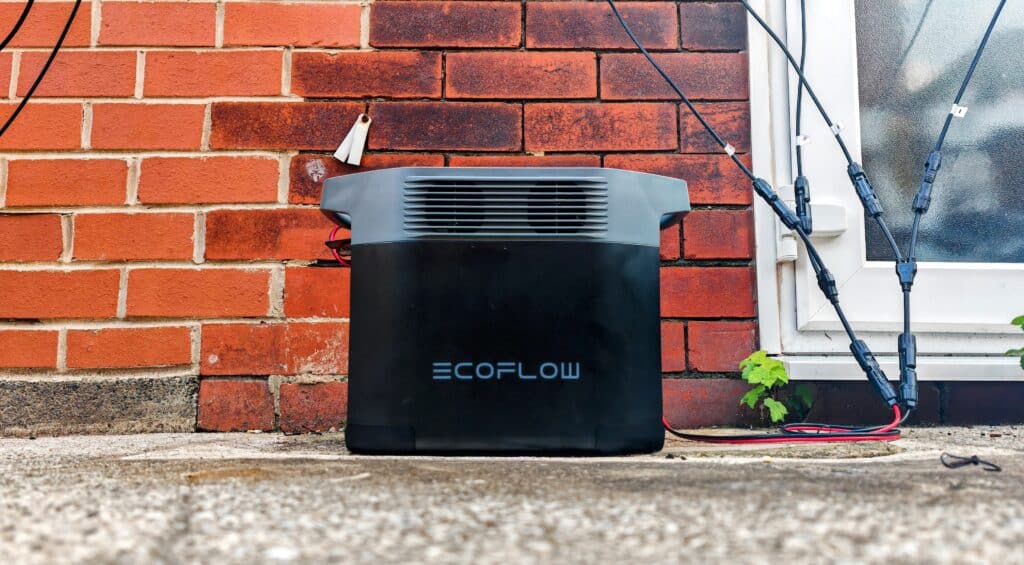

With the panels in parallel, there wasn’t much perceived difference in performance. The early morning input was around 23-28W, just like series. I only noticed a peak input of 125W, but I wasn’t regularly checking throughout the day.
The EcoFlow DELTA 2 managed to charge from 0-60% throughout the day.
If I had placed the panels on my roof, had a house with a better orientation or lived somewhere sunny, then my results would have been much better, but I am still happy with what I achieved.
Hybrid Performance with Four Solar Panels
Once the previous testing was done, I left the system wired up permanently with the hybrid connection for my garage/gym. I have not monitored the peak input consistently, but I often get 250W reasonably consistently in the afternoon.
On a reasonably sunny day, I am able to run the devices in my garage and charge the Delta 2 from 10% to 90%, which is the limits I have set within the EcoFlow app. This has allowed my garage to run off-grid throughout the week. Admittedly, I am only running a POE switch, access point and two Reolink CCTV cameras on it, which have a draw of around 40W 24/7. I plan to move our chest freezer to it this week and set up two smart plugs so I can measure the AC input when the unit hits 10% charge and the total output so I can have an idea of the exact amount of solar energy I harvest.
The Delta 2 can accept 11-60V, 15A with 500W max input, so it should work well with four panels connected using a hybrid approach.
Price and Alternative Options
| Preview | Product | Rating | Price | |
|---|---|---|---|---|
   | EcoFlow 100W Flexible Solar Panel with IP68 Waterproofing &... | £109.00 | Buy on Amazon |
The EcoFlow 100W Flexible Solar Panel has an RRP of £109, which is reasonably priced for flexible solar panels. Most competing options seem to be priced at around £100-£120.
Below prices are from the time of writing on 16/08/2023 and are likely to change.
On Amazon, the EcoFlow 100W is listed at £139 but has a £30 off voucher, so the same price as the RRP.
- ALLPOWERS SF100 100W Flexible Solar Panel is £140 with a 20% off voucher with claims 23-25% efficiency (a possible exaggeration), 30.6V open circuit voltage, 25.5v maximum output voltage, and 4.58A short-circuit current.
- Renogy 100W Flexible Solar Panel is £130 with £20 off voucher and claims 22% efficiency with a 23.5V open circuit and 5.51A short-circuit current.
- Renogy 100W 12V Flexible Monocrystalline Solar Panel is priced at £102 with claims 22% efficiency 22.5V open circuit and 5.75A short-circuit current
- FIREFLY ENERGY Solar Panel Flexible is priced at £100 with claims 23% efficiency and 18.15 V operating voltage. They don’t state the amps, but for a 100W panel, that should work out at 5.5A.
If you plan to use multiple panels, you may want to check the voltage and amp ratings as they vary slightly and, therefore, may fall out of range of the power station spec. It is also recommended that you stick to matching panels (or at least matching voltage and amps).
Overall
As usual for EcoFlow products, the 100W Flexible Solar Panel is excellent. I don’t have any experience with other flexible panels, and most solar panels appear to have similar performance. As I primarily use my power stations at home, this panel is superior to the portable panels as I feel more confident having them physically attached to the wall rather than portable panels freestanding in my garden.
It is a bit hard to set up an objective test to confirm efficiency, but I assume most brands successfully hit around that 23% efficiency mark. I’d only be wary if a panel is significantly cheaper than the other options.
With the performance likely being similar to competing options, and each option priced within around £10 of each other, it is not really possible to make any grand claims about this being the best on the market.
Call me a fanboy and biased, but I’d probably choose the EcoFlow panels over most of the others I have listed purely because I have been very happy with their products, and they appear to be a reliable brand, especially in comparison to all the other random brands I have never heard of.
EcoFlow 100W Flexible Solar Panel Review Rating
Summary
As usual for EcoFlow products, the 100W Flexible Solar Panel is excellent. Build quality is excellent, and the performance has been as good as expected. While other brands may have fractionally better price/performance, I’d prefer to stick to a reputable brand like EcoFlow.
Overall
85%-
Overall - 85%85%
Pros
- Well-made, durable coating and IP68
- Easy to install
- Good performance with claimed 23% efficiency
Cons
- Competing options are fractionally cheaper
I am James, a UK-based tech enthusiast and the Editor and Owner of Mighty Gadget, which I’ve proudly run since 2007. Passionate about all things technology, my expertise spans from computers and networking to mobile, wearables, and smart home devices.
As a fitness fanatic who loves running and cycling, I also have a keen interest in fitness-related technology, and I take every opportunity to cover this niche on my blog. My diverse interests allow me to bring a unique perspective to tech blogging, merging lifestyle, fitness, and the latest tech trends.
In my academic pursuits, I earned a BSc in Information Systems Design from UCLAN, before advancing my learning with a Master’s Degree in Computing. This advanced study also included Cisco CCNA accreditation, further demonstrating my commitment to understanding and staying ahead of the technology curve.
I’m proud to share that Vuelio has consistently ranked Mighty Gadget as one of the top technology blogs in the UK. With my dedication to technology and drive to share my insights, I aim to continue providing my readers with engaging and informative content.
Last update on 2024-04-28 / Affiliate links / Images from Amazon Product Advertising API

